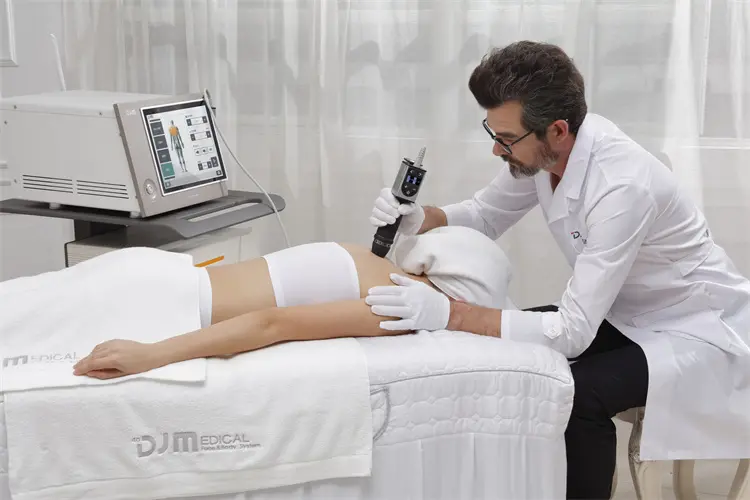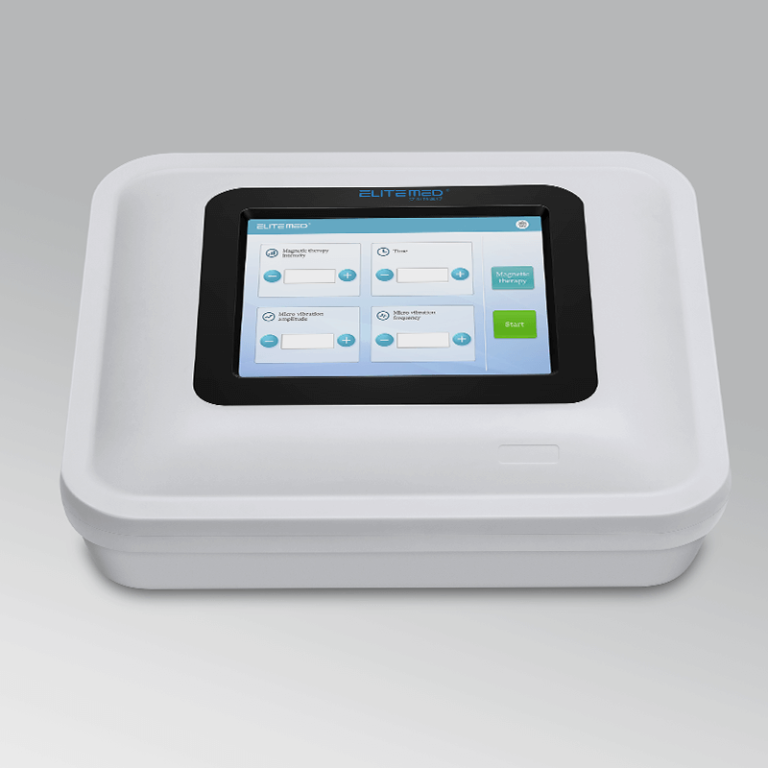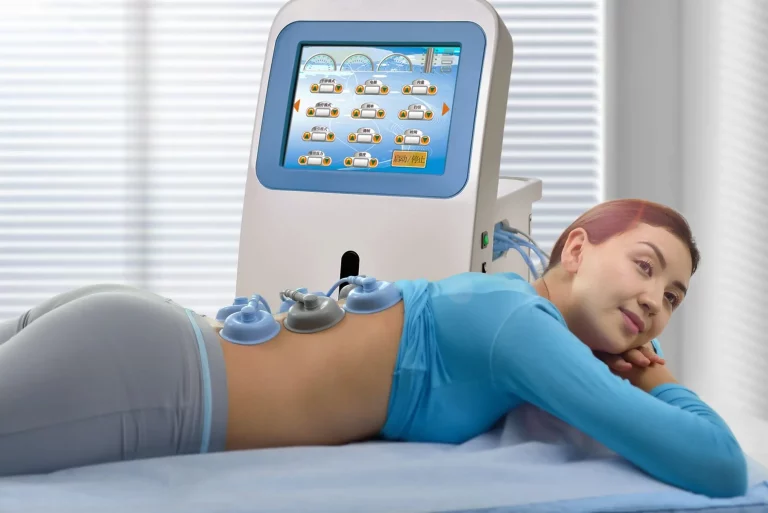►►►tDCS Technology
Transcranial direct current stimulation (tDCS) is one of the emerging non-invasive neuromodulation tools in recent years, which outputs a constant low-intensity direct current to specific cortical areas with the help of two scalp electrodes.
Research on tDCS dates back to the 1960s and was initially applied mainly to neurobehavioral disorders, and in recent years researchers have continued to explore the effects of its application in a variety of neurological disorders. Research on electrical stimulation of the brain resumed at the beginning of the 21st century and revealed that tDCS can modulate motor cortical excitability through both anodic and cathodic modulation. tDCS anodic currents can promote neurons, thus producing excitatory effects on the cortex, while cathodic currents can cause super depolarization of cellular membrane potentials, which can produce inhibitory effects. In addition, tDCS can affect the long-duration potentiation/long-duration inhibition by modulating the efficacy of synaptic transmitters, resulting in a delayed effect. The excitatory and inhibitory effects of tDCS stimulation are not absolute, and cathodic stimulation at specific parameters (2 mA, 20 min) can lead to a long-duration potentiation effect. With the increasing research on electrical stimulation, tDCS has also been explored in many ways in various neurological disorders in children. This article reviews the therapeutic applications of tDCS in pediatric neurologic and psychiatric disorders and discusses future applications and treatments of tDCS in children.
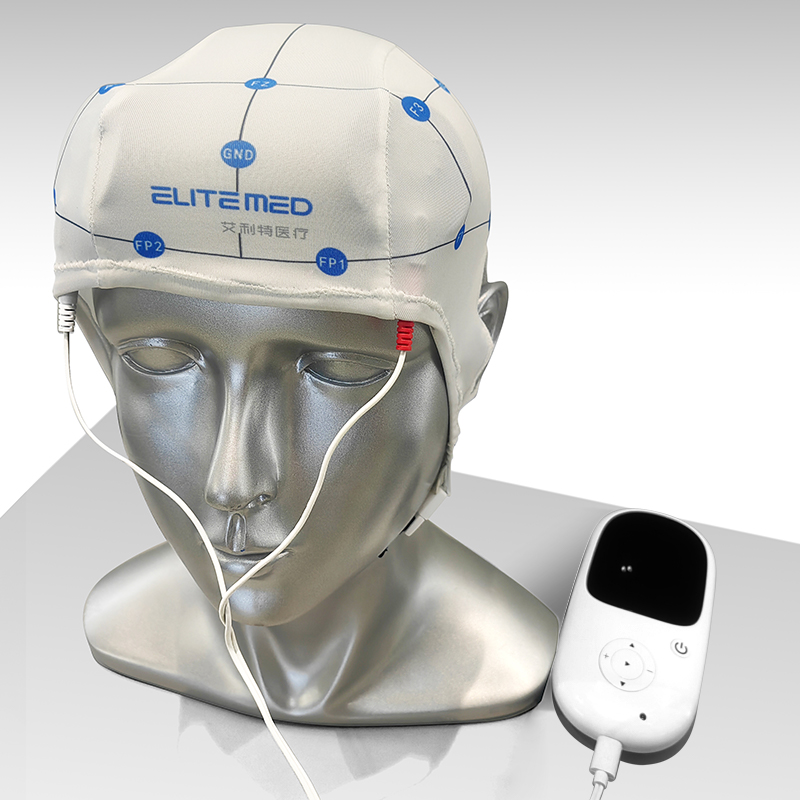
►►►Application of tDCS in Attention Deficit Hyperactivity Disorder(ADHD)
Attention deficit hyperactivity disorder (ADHD) is a disorder that manifests symptoms of hyperactivity, impulsivity, or attention deficit in childhood. These symptoms can affect cognitive, academic, behavioral, emotional, and social functioning.Treatment for ADHD may involve behavioral, psychological interventions, medication, or educational interventions. It has been found that the main symptoms of ADHD are related to abnormalities in the frontal striatal circuit and prefrontal cortex, where there are excitability abnormalities in the cortex. tDCS, in the treatment of ADHD, generally places the anode in the dorsolateral prefrontal cortex (DLPFC) and the cathode with the contralateral orbit, which can be used to pass currents through the positive and negative electrode induce depolarization and superdepolarization of neurons, thereby modulating cortical function.
Scholars have found that transcranial oscillatory direct current stimulation enhances the slow oscillatory power in bilateral frontal regions of children with ADHD and improves their memory function; at the same time, it improves behavioral inhibition in children with ADHD. The researchers conducted a single-blind controlled study on 20 adolescent patients with ADHD. Divided into three stimulation groups: one with the anode placed in the left DLPFC and the cathode placed in the contralateral orbit; one with the cathode placed in the left DLPFC and the anode placed in the contralateral orbit; and one with a sham stimulation group. The current intensity was 1.5 mA, and the stimulation interval was at least 72 h. It was confirmed that cathodal stimulation increased the inhibitory accuracy of the No-Go task in the Go/No-go association task (GNAT), and improved the accuracy of the Go-phase responses. Improvements in selective attention and fewer errors in inhibitory control tasks were observed. The studies described above suggest that tDCS may improve executive and inhibitory behaviors in children with ADHD. In another study, 21 adolescents with ADHD and 21 healthy adolescents served as a control group and received a single treatment session in three situations (anode in the right inferior frontal gyrus, cathode in the left mastoid process; anode in the left mastoid process, cathode in the right inferior frontal gyrus; and sham stimulation) at a current intensity of 1 mA for 20 min, which was evaluated with a modified version of the Flanker test. Results showed that children in the right inferior frontal gyrus receiving anodic stimulation showed fewer errors and reduced reaction time variability compared to controls. In addition, some researchers have also found that modulation of prefrontal dot activity using tDCS enhances working memory and improves symptoms of ADHD, and some studies have shown that anodic stimulation of the left DLPFC improves working memory.
From the existing studies, most of them explore the optimal stimulation site, and the stimulation electrodes are generally placed in the DLPFC region with stimulation intensity around 1-2 mA, and their stimulation is mostly for a single session of 15-20 min treatment. However, the combination of stimulation and the choice of cathode-anode are still not standardized and need to be further explored.
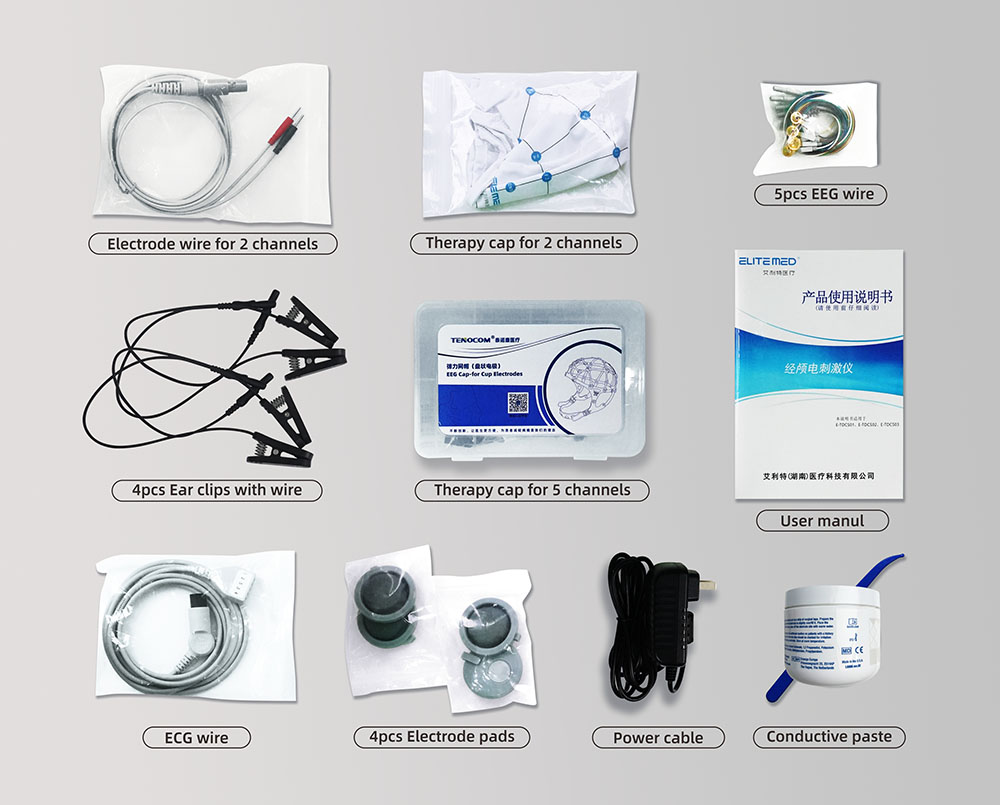
►►►Application of tDCS in Autism Spectrum Disorders
Autism spectrum disorder (ASD) is a broadly heterogeneous neurodevelopmental disorder characterized by deficits in social communication and interaction and stereotyped patterns of behavior, interests, and activities. Current treatments for ASD focus on behavioral and educational interventions for core symptoms, and there is a lack of effective pharmacological interventions. Researchers have found that the pathogenesis of ASD is closely related to glutamic acid (Glu), Glu, and *γ-aminobutyric acid (GABA), and that tDCS affects the transmission of GABA and other neurotransmitters, thereby causing neuronal remodeling, thus providing a theoretical basis for the treatment of ASD.
In the study on the improvement of language function by tDCS treatment, the anode was placed in the left DLPFC and the cathode was located in the right supraorbital region with a current intensity of 2 mA and a stimulation time of 30 min, and the vocabulary and grammatical abilities were evaluated before and after the treatment using the bilingual aphasia test, respectively, and the results showed that both grammatical and vocabulary scores were improved. In another study, the researchers placed the anode on the left DLPFC with a current intensity of 1mA and a stimulation time of 20 min, five times a week. The results suggested a 7.9% improvement in Childhood Autism Rating Scale (CARS) scores, a 14% improvement in Autism Treatment Evaluation Checklist (ATEC) scores, and a decrease in social behavior, sensory and cognitive aspects, and health and behavioral problems were reduced. In a follow-up study with the same group, the researchers assessed the relationship with autism by monitoring the level of peak a-frequency by EEG before and after tDCS treatment. The study found that children in the anodic stimulation group had a significant increase in EEG peak a-wave frequency (PAF) compared to baseline levels and that a decrease in social health and behavioral problems scores (26%) was associated with an increase in PAF after stimulation. They hypothesized that tDCS may improve ASD-related symptoms by increasing PAF. By evaluating the tDCS on hyperactivity and noncompliance in children with ASD, after treatment, the children’s Autistic Child Behavior Scale scores were significantly reduced, with improvement in the hyperactivity and noncompliance, social avoidance, and irritability subscales.
The current study showed that the treatment was well tolerated by the children with a reduction in clinical symptoms. However, there is still a paucity of studies on ASD and only three studies were randomized double-blind controlled studies, two of which were from the same team, so clinical evidence is scarce and the sample size evaluated was limited, and further studies are recommended.
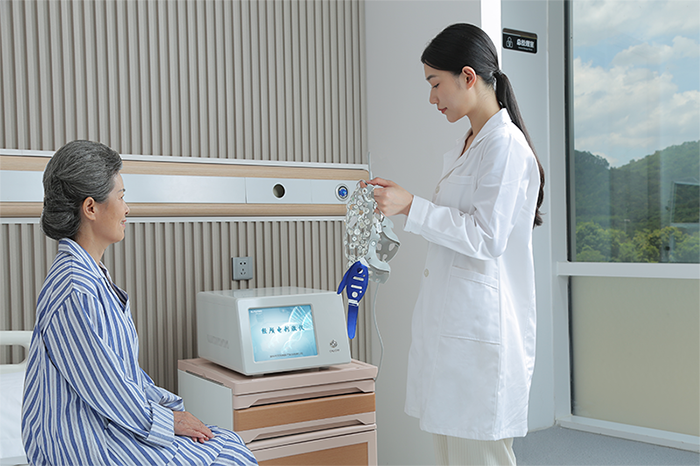
►►►Application of tDCS in Epilepsy
The basic principle of using tDCS in childhood epilepsy is that the main application of cathodic stimulation induces hyperpolarization of cortical neuronal cells and inhibits local epileptiform discharges, thus achieving the purpose of reducing clinical epileptic seizures. In a study, tDCS was applied to the treatment of refractory slow-wave sleep phase with persistent spikes and slow waves (current intensity 1.0 mA, stimulation time 20 min). The results of the test suggested that the epileptiform discharges in the test group during the sleep phase did not decrease compared with the sham-stimulated group, but the spikes appeared in a more confined area, which may suggest that the tDCS may have an inhibitory effect on the epileptiform discharges. The efficacy of tDCS in refractory epilepsy has also been explored using tDCS, and this randomized controlled study suggests that monitoring of the EEG 48h after tDCS treatment suggests a significant reduction in epileptiform discharges in the experimental group compared to the control group. All children treated were well tolerated and did not experience serious side effects (stimulation intensity 1mA, stimulation time 20min, single session, cathode placed at the epileptic discharge location). A case of an 11-year-old epileptic girl was reported, the negative electrode was placed in the epileptiform discharge area (right temporal and parietal lobes), the stimulation intensity was 2mA, the stimulation time was 20min, and the total course of treatment was 2w. After the treatment, the frequency of seizures and epileptiform discharges of the child was significantly reduced compared with the previous one. In a recent study, tDCS was applied to treat drug-refractory epileptic spasmodic seizures. Seven patients, six of them children (2-15 years old), were included in the study, which lasted for a total of 2w, with a current intensity of 1-2mA and a stimulation time of 2x20min. In the first 20min, the negative electrode was placed on the right top, and the reference electrode was placed on the left orbital region of the eye. In the second 20 min, the negative electrode was placed on the left apex and the reference electrode was placed on the right orbital region. Subsequent follow-up revealed a significant reduction in seizure frequency compared to the previous period, i.e., tDCS treatment of bilateral parietal regions may reduce seizure frequency. Subsequently, a randomized, double-blind, three-arm study of the application of tDCS for the treatment of refractory focal epilepsy was carried out experimentally. A total of 82 patients were included in the study and were divided into three groups: the first group was a sham stimulation group; the second group was a true stimulation group with 20 min of electrical stimulation on the treatment day; and the third group was a true stimulation group with 2 sets of 20-min electrical stimulation on the treatment day, with two sets of 20-min intervals between the two groups. negative electrodes were placed in the area of epileptiform discharges with a current intensity of 2 mA and a stimulation time of 2 w. A follow-up period of 8 w was performed. Seventy of these patients completed the study. The results of the study showed that compared to the sham stimulation group, the frequency of seizures was significantly reduced in both true stimulation groups, and the therapeutic effect could be sustained for 4 w. The patients in the third group had a 64.98-66.32% reduction in the frequency of seizures compared to the second group in the 9th to 10th w of follow-up. This suggests that the 2x20min stimulation regimen is superior to the 20min daily stimulation regimen.
According to the current study, the stimulation site is usually the peak point of epileptic discharge, and cathodic stimulation is used. The intensity of stimulation is 1-2 mA, and the duration of a single session is usually 20 min. tDCS is well tolerated by children with varying degrees of improvement in seizures. According to the available evidence, tDCS can effectively control seizures and reduce abnormal epileptiform discharges, however, because the target of stimulation is limited to the cortex, it is not effective for lesions in the deeper parts of the brain. As for the therapeutic application, the intensity, duration, and duration of different trials still need more exploration to define the optimal stimulation protocol.
►►►Application of tDCS in Cerebral Palsy
Cerebral palsy is a group of permanent, non-progressive, heterogeneous clinical syndromes characterized by motor and postural deficits. These syndromes are caused by abnormalities in the developing brain (for a variety of reasons) and vary in severity. Children with cerebral palsy require collaborative programmatic treatment to maximize social and emotional development, education, mobility, and independent daily living. Therefore, tDCS has recently been increasingly emphasized by researchers as part of combined cerebral palsy treatment.
The study reported 30 pediatric patients (4-6 years old) with neuropsychological developmental delay who were treated with tDCS for 15-20 min (current intensity 0.03-0.08 mA) in the frontal and parietal regions of the left hemisphere, and the results suggested that children with more severe impairments showed a better degree of improvement. In another randomized, double-blind controlled study of 24 children with cerebral palsy aged 5-12 years using gait training and tDCS, the experimental group received gait training and primary motor cortex anodic stimulation (stimulation intensity 1mA, stimulation time 20min) and the control group received gait training and sham stimulation for a total of 2w. The results suggested that the experimental group showed better performance on the anterior-posterior oscillations (eyes open and closed), the medial-lateral oscillations (eyes closed), and the pediatric balance scales. The results showed that the experimental group was better than the control group in anterior-posterior oscillation (eyes open and closed), mid-lateral oscillation (eyes closed), and pediatric balance scales, which means that gait training combined with anodic stimulation of the primary motor cortex can improve the static balance and functional performance of children with cerebral palsy. In a similar study, gait training combined with tDCS was applied to treat a 3-year-old patient with cerebral palsy. After the application of gait training and tDCS (stimulation intensity of 1 mA, stimulation time of 20 min, anode placed on C3/C4, cathode placed on the supraorbital contralateral side, and 10 stimulations were given to each hemisphere), the experiment observed that the child’s stride length, gait, and stance swing were improved. In order to further study the efficacy of the combined application of tDCS on patients with cerebral palsy, a series of RCTs were conducted, including virtual reality combined with tDCS, gait training combined with tDCS, etc. The results of the study showed that the combined treatment using tDCS could better improve the patients’ locomotor ability. However, the study design was heterogeneous, the follow-up period was short, and longer treatment and observation protocols were needed.
There are fewer studies utilizing tDCS for the treatment of cerebral palsy, and most of the treatments are combined with physical therapy to achieve improvement. The existing results have shown improvement in the motor function of the patients and are well tolerated, so the application of tDCS as an adjunctive or combined treatment is worth further exploration.
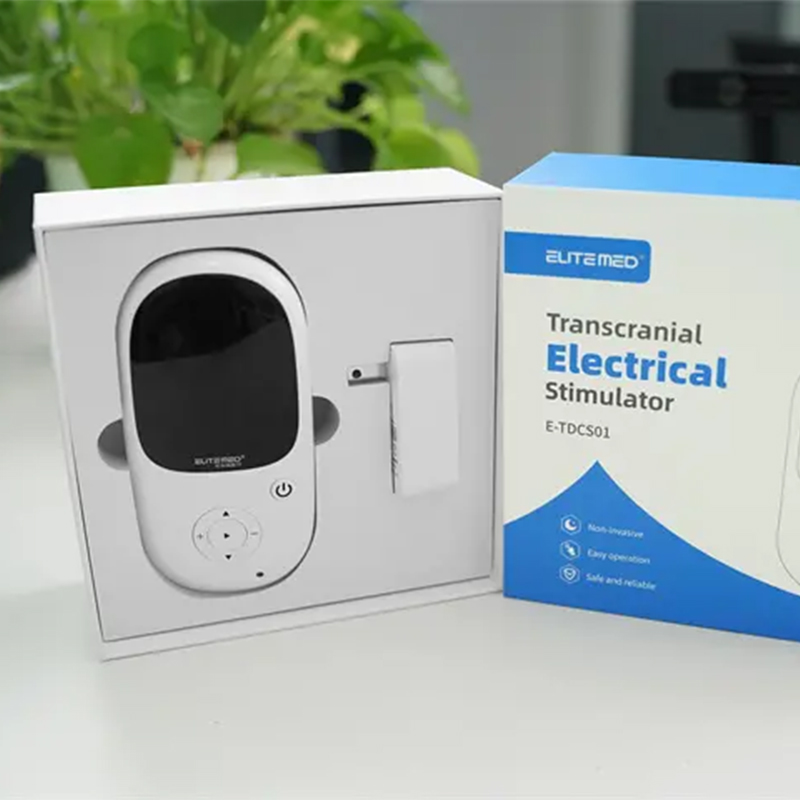
►►►Summary
The study of tDCS in children and adolescents is a young and promising area of development, with current small sample studies demonstrating the efficacy of tDCS in childhood epilepsy, ADHD, and other disorders, as well as preliminary confirmation of the safety and tolerability of tDCS treatment in children.
►►►References
- Chen Runze,Wang Yuping,Qi Xiaohong.Progress of tDCS in the treatment of neurological and psychiatric disorders in children[J].
- Journal of Brain and Neurological Diseases,2022,30(09):592-595+572.

